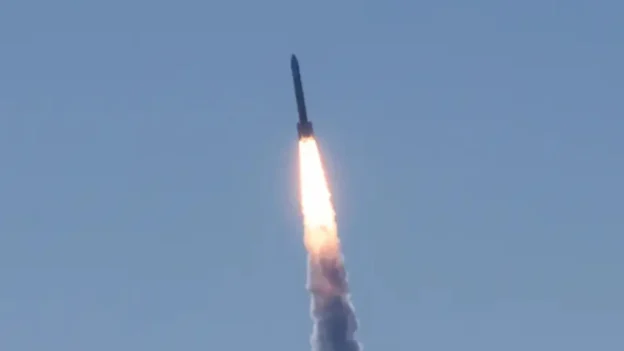On October 26, 2025, at 9:00:15 a.m. Japan Standard Time, the Japan Aerospace Exploration Agency (JAXA) succeeded in launching the HTV-X1 (JAXA) succeeded in launching the HTV-X1 resupply module aboard the No. 7 H3 rocket from Tanegashima Space Center. Shortly after separation from the launch vehicle, communications and attitude control of the spacecraft were confirmed.
HTV-X1 is currently moving steadily toward the docking orbit with the ISS, with arrival scheduled for October 30. The capture maneuver will be performed by the Canadarm2 robotic arm and is scheduled for around 0:50 a.m. (JST), followed by final docking later that day.
A key technological evolution for orbital loading
The HTV-X1 spacecraft represents the next generation of Japanese refueling vehicles, taking over from the Kounotori program. This new version incorporates substantial improvements in energy efficiency, cargo capacity and automated docking systems.
Its design responds to the requirements of more complex and sustained missions to the ISS, extending Japan’s logisticalThe design responds to the requirements of more complex and sustained missions to the ISS, expanding Japan’s logistical capabilities in the context of international cooperation.
HTV-X1 reinforces Japan’s role in low orbit
With this operation, JAXA consolidates its position as a strategic player in space transportation missions. The
The current trajectory of HTV-X1 is being monitored by ground control teams while the final approach and docking sequence is being prepared. This mission is not only delivering essential supplies such as food and clothing, but also research instruments needed for scientific experiments in microgravity.
International cooperation in action
The automated transport of HTV-X1 exemplifies Japan’s commitment to multilateral agreements on the ISS. The participation of systems such as the Canadian-built Canadarm2 in the capture maneuvers underscores the technological integration among the participating agencies.
Japan continues to strengthen its unmanned space infrastructure, setting a clear roadmap towards sustainable and efficient missions from the Asian territory to low-Earth orbit.
Source: JAXA
Photo: DW


